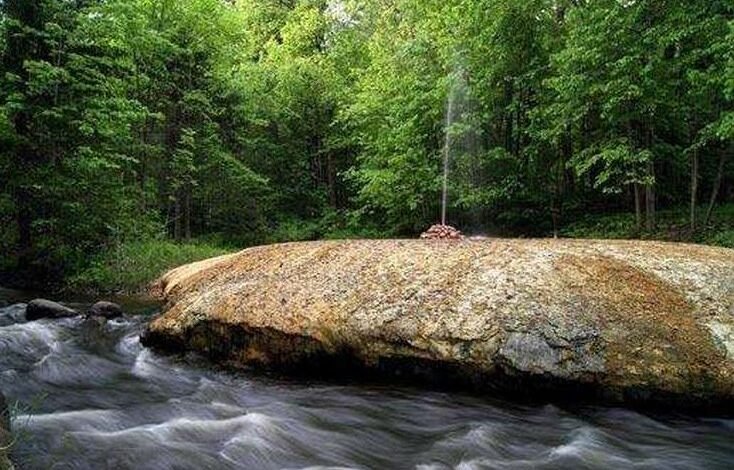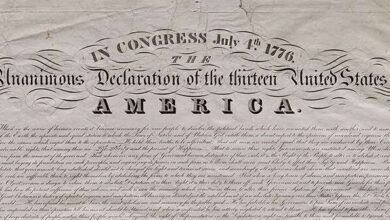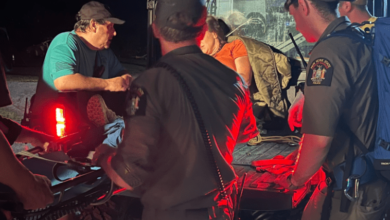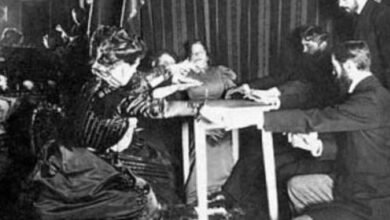Mineral Springs of the Saratoga County Area: Some History


 The mineral springs of Saratoga County first attracted the attention of the white settlers soon after the middle of the eighteenth century. In early colonial days they were westward of the first line of settlements and off the main line of such travel as there was between the valley of the Hudson River and the valleys of Lake Champlain and the St Lawrence River.
The mineral springs of Saratoga County first attracted the attention of the white settlers soon after the middle of the eighteenth century. In early colonial days they were westward of the first line of settlements and off the main line of such travel as there was between the valley of the Hudson River and the valleys of Lake Champlain and the St Lawrence River.
The colonists, naturally, established themselves first in the valley of the Hudson and their earliest settlements in this region were some ten miles to the east of Saratoga Springs [near what is now Schuylerville].
The line of communication between the French villages in the valley of the St Lawrence and the Dutch and English colonists in and around Albany, whether used for peaceful or hostile purposes, also followed this main waterway.
The springs were in the heart of the Mohawk hunting grounds and their salty waters undoubtedly attracted the wild animals before they caught the eye of Indigenous people.
So far as we know, the High Rock spring was first discovered. Its mound of calcareous tufa would naturally be more conspicuous than the mere uprising of water and gas from a crevice in the rock. [Tufa is a porous rock composed of calcium carbonate which forms around mineral springs.]
The High Rock was in the midst of a depressed area, at the foot of a rock escarpment and along the west side of a brook. While the smaller features are disguised by the village improvements of today, the rock bench is conspicuous, and the larger features can easily be restored in one’s imagination.
About a century after its discovery by the first colonists, a pit was sunk below the High Rock mound with the hope of cleaning the conduit and increasing the flow. It is recorded that the excavators found the mound itself resting upon two pairs of crossed logs. The logs were supported by muck and tufa, the whole forming a section of seven feet.
Still lower were two feet of tufa, then one foot of muck with another log, then three feet of tufa, beneath which were charred sticks, the remains of a fire. Evidence of this sort would suggest the presence of Indigenous people some thousands of years before the arrival of settlers.
Of the identity of the first colonist who viewed the High Rock spring we may not be assured. There is some reason to think that a wounded French soldier was the pioneer.
But the first one whose visit attracted special attention was Sir William Johnson, the picturesque character, whose life is intimately associated with the early history of the Mohawk Valley.

 Johnson, afflicted with a bodily ailment, went to the High Rock spring in 1767. His stay benefited him and he aided much in directing attention to the waters. Four years later the first cabin was built near the spring itself and then the long procession of distinguished visitors was well under way.
Johnson, afflicted with a bodily ailment, went to the High Rock spring in 1767. His stay benefited him and he aided much in directing attention to the waters. Four years later the first cabin was built near the spring itself and then the long procession of distinguished visitors was well under way.
In 1783, Generals George Washington, Philip Schuyler and Alexander Hamilton with Governor George Clinton honored the primitive watering place with their presence. Four years later came Dr. Samuel L. Mitchell [1764-1831], who was for many years the leading scientific man in New York.
Accommodations improved, but in the earlier years Ballston Spa was more sought than Saratoga Springs. In the early part of the nineteenth century the tide of travel again turned to Saratoga Springs and has held this course ever since.
As early as 1770 the medicinal properties of the waters were commented upon by Doctor John Constable [1728-1785] of Schenectady, and in 1793 in Memoirs of the American Academy of Arts and Sciences, was published a letter from Dr. Samuel Tenney [1748-1816], a [Revolutionary War] regimental surgeon, [then] at Saratoga.
In the same year appeared a “Dissertation upon the Mineral Waters of Saratoga,” by Dr. Valentine Seaman [1770-1817] of New York.
In the course of the next century a rather extended series of papers and separate books was devoted to this subject, and it is to be hoped that with the development of the springs as a health resort of increasing prominence the curative properties of the waters and the attractions of the beautiful village and surrounding country will be more and more widely known.
The following chronological list gives the dates when the older and better known springs were discovered as natural flowing vents, or were developed with the drill:

 This is not a complete list of the springs. There are, for example, northeast of the village and about a mile from the High Rock, the Ten springs, or Excelsior, and the Eureka white sulphur group.
This is not a complete list of the springs. There are, for example, northeast of the village and about a mile from the High Rock, the Ten springs, or Excelsior, and the Eureka white sulphur group.
Opposite Congress Park, across Broadway, is the Ainsworth. To the south are the Chief, Adams and Arondack (formerly the Kissingen) besides many drilled wells.
Other Springs in the Region
In Ballston Spa, mineral springs were known toward the close of the eighteenth century. The modern ones, however, come up through drill holes which are put down through slate to the limestone at depths varying from 604 to 715 feet.
There are four now active, namely, the Iron springs, not possessing much if any gas at present, the Artesian Lithia, Hides Franklin [said to have been discovered through Spiritualism] and a new one recently opened called the Washington.
In the 1835 edition of the work of Dr. John H. Steel [1780-1838] entitled “Analysis of the Mineral waters of Saratoga and Ballston,” it is stated that the Quaker Springs are situated ten miles southeast of Saratoga Springs and that they contain lime, magnesia, iron, and a certain percentage of common salt and soda.
The gaseous contents are small in comparison with those already described; their mineral impregnation is not sufficient to entitle them to much attention.
These springs still exist and are feeble in their manifestations of activity. A few bubbles of carbonic acid gas and of sulferetted hydrogen come through the waters.
In William W. Mather‘s Report on the First District, New York State Geological Survey, 1843, there is the following record of Reed’s mineral spring:
“This spring is in South Argyle, Washington County, near the Moses Kill. It is an acidulous carbonated water, something like the Saratoga waters, but the gas does not escape very abundantly from the fountain. Bubbles of carbonic acid gas rise from the bottom of the fountain at short intervals, and the water has a pleasant acidulous taste, but it does not sparkle.
“It is resorted to by the people around and many ride there from Saratoga to drink the water for a change. It is a pleasant acidulous water. It is used by the people of the vicinity for raising their dough preparatory to baking it, no yeast being required. The spring rises from a fissure in limestone near its junction with slate rocks, which are metamorphic, or belong to the Taconic division of rocks.”

 This spring must have been on the east side of the Hudson River and at least fifteen miles northeast of Saratoga Springs.
This spring must have been on the east side of the Hudson River and at least fifteen miles northeast of Saratoga Springs.
The most northerly of all the springs now important is the Gurn, eight miles from the village of Saratoga Springs. It is very actively flowing, well carbonated and of the same general composition as the Saratoga waters.
Still farther north in the village of Whitehall, thirty-nine miles from Saratoga Springs, is a spring called the “Adirondack,” feebly carbonated and of greatly contrasted composition to the Saratoga waters in that it contains less of sodium chlorid than of either calcium or magnesium carbonate, and almost as much calcium sulphate. The total dissolved solids is only about one-eighth or one-tenth that of the Saratoga waters.
To the south the mineral waters have been discovered even beyond Ballston. Thus, at Round Lake, in 1875, a drill hole was put down which reached a total depth of 1,403 feet. At a point below 1,300 there was struck a flow of water of composition not unlike the Saratoga waters. The hole was torpedoed, however, and after the explosion the flow was lost.
In 1827, a well was even drilled in Albany 500 feet deep, on Ferry street, and yielded carbonated waters of the general composition of those at Saratoga Springs. Albany is forty miles from Saratoga, and respectively thirty-two and twenty-six from Ballston and Round Lake. No other drilled wells have been recorded in the interval from Round Lake to Albany.
Thus waters, carbonated and of a somewhat similar composition are known over a stretch of approximately forty miles in a general north and south direction from Albany to Gurn springs, or if we include the Adirondack springs, at Whitehall, of about sixty-five miles.
Between Albany and Round Lake, a distance of twenty miles, none are known. And again from the Gurn spring to Whitehall, a distance of thirty miles, none have been reported.
These statements are in a measure useful in connection with general geographical conceptions, but they are not expressed in a way to be of geological significance. The springs should be grouped in northeast and southwest lines, along the known faults or fault systems.
Apparently then, the Ballston-Saratoga and Springs-Gurn series are to be taken on one line, with perhaps the Whitehall spring at the extreme north.
The Round Lake well is five miles to the east of this line; the Quaker Springs eight miles; Reed’s Spring in South Argyle, eight or more; and the Albany well nearly fifteen miles east of its southern prolongation.
This essay was excerpted from “The Mineral Springs of Saratoga,” by James F. Kemp, published as New York State Museum Bulletin 159, April 15, 1912. It was edited slightly for clarity and annotated by John Warren.
Illustrations, from above: Geyser Island Spouter on the Geyser Loop Road in Geyser Park, part of Saratoga Spa State Park, showing its tufa; High Rock Spring, Saratoga Springs postcard ca. 1875; a list of early springs and their dates of discovery; and tourists gathered around a spouting Champion 1 in 1871.
Source link




